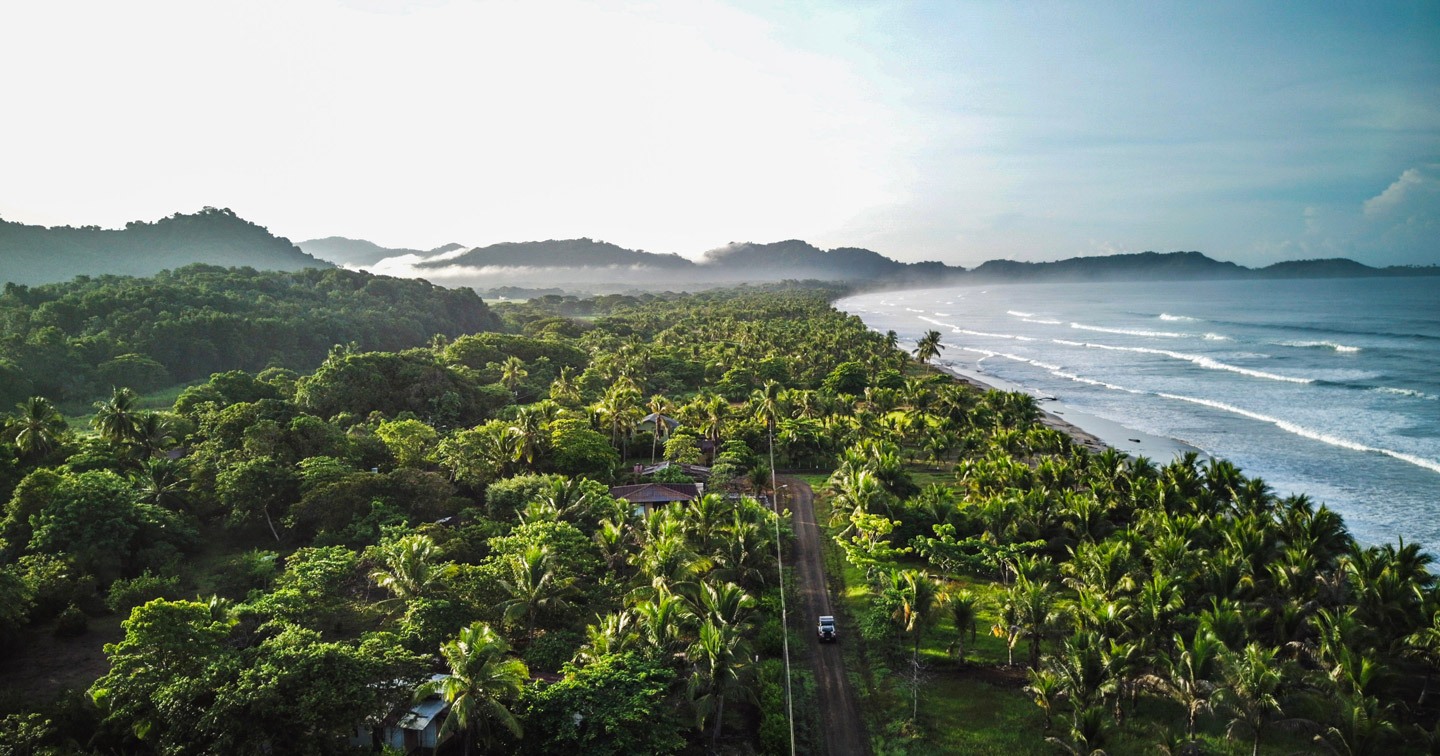
A few suggestions to get the holiday planning process started

Whether you want to hit the hotspots or venture off the beaten track, our consultants will create a bespoke Costa Rica trip for you. Having scoured the country for the best properties, we offer everything from rustic lodges to luxurious hideaways. We can take you away from the crowds using our knowledge of hidden beauty spots; so instead of queuing for a waterfall in Arenal, you can enjoy a river all to yourself in Bijagua. With something for both families and couples, Costa Rica is best discovered on a self-drive trip – don't worry, you can leave the route planning to us.
ENQUIRE NOWDiscover different ways to explore Costa Rica
Practical advice and inspiration to help you prepare for your holiday
Our consultants have explored Costa Rica from coast to glorious coast. We’ve white-water rafted along the Pacuare River, hiked in remote national parks, seen turtles nesting, driven the Pan-American Highway and even learned to surf. When we say we've walked the walk, we really mean it. Paired with an in-country Concierge who knows the country inside out, our fantastic local guides will lead specialist coastal, city and jungle jaunts tailored to your interests.

Costa Rica is the teacher’s pet of the ecotourism class, and this small Central American nation regularly gets straight A’s on issues green. A cast of thousands of eco-lodges and projects fly the green flag and a staggering 25 per cent of the country is set aside in no less than 30 national parks – the highest percentage of any nation on the planet. Call us cynical, but while some destinations pedal repackaged product as eco-friendly in order to the move with the times, Costa Rica has been walking the walk for years. Responsible tourism is embedded as the fundamental principle of the country’s tourism mantra – even the tourist board’s occasional strapline is ‘No Artificial Ingredients’.
Impressive, we see you nod, but only to be expected from a country that abolished its own armed forces in 1948 preferring (in the aftermath of a bloody civil war) to spend millions on improving the day-to-day lot of its citizens rather than rearming to the teeth in the face of an improbable invasion from their pacifist Panamanian neighbours.
In fact, the only cross-border incursions in recent years have been those by hordes of Hawaiian-shirt-wearing American tourists. That in turn may mean the cuisine on offer rarely soars to heights much beyond super-sized burgers and shakes (although there are exceptions), but gringos from America demand – and receive – a level of service that Europeans holidaying in their own continent can often only dream of. That Ticos (as Costa Ricans refer to themselves) make such naturally warm hosts only makes the experience of a luxury holiday here all the more pleasurable.
Eco-conscious travellers will be delighted by Costa Rica’s endless opportunities to get up close and personal with nature and wildlife in the country’s national parks. The Tortuguero National Park acts as the perfect homage to Mother Nature with tropical forest dripping in foliage, and its beaches providing safe haven for endangered sea turtles who nest on the protected Caribbean coast. Then there’s the remarkable Rincon de la Vieja, a sky-scraping volcano home to steaming natural hot springs. Further south, Playa Nosara stuns with miles of unspoiled white sand while Costa Rica’s most photogenic, conical volcano, Arenal, never ceases to amaze. Depending on how adventurous you’re feeling, you can discover all this in a variety of different ways; be that on foot, in a 4x4, a canoe or even on a surfboard. Costa Rica holidays can also include a dose of culture, with a stay in San José, its lively capital. Visit the Museo de Oro (Museum of Gold), the Museo de Jade (Museum of Jade) and the Museo Nacional de Costa Rica (National Museum of Costa Rica) alongside a local guide for an insight into the country’s past. Sample the freshest fruit and veg at Feria Verde, the city’s best farmers market, held every Saturday morning, and try some of the world’s best coffee from the Central Valley at a coffee shop in Barrio Escalante.
For shorter Costa Rica holidays, you could spend a week barefoot on an isolated beach based out of a remote lodge, or if you want to splash out, then perhaps consider a lavish resort in a palm-fringed ocean-front paradise setting. Looking for an eco-friendly escape? Our travel experts can create a tailor-made luxury holiday using only sustainable hotels, whether it’s a volcano-side hotel fashioned out of recycled material or a romantic hideaway run solely on solar power. In this country-sized adventure playground children can run riot in endless nature, spotting exotic animals such as green turtles, blue whales and coatis as well as surfing gentle waves. As mentioned, this is a pocket rocket of a country, and for all but the most backpacker-budgeted travellers, access to the furthest-flung corners is by light aircraft, which offers a wonderful perspective on the varying and distinct ecosystems that make this such a fascinating destination. The wetlands of Tortuguero and the Caribbean Coast give way to the jungle, interspersed with the massive banana plantations that provide so much of the country’s income. Next come the volcanoes and cloud forests of the interior and Central Valley, and then it’s down to the tropical rainforest reserves and surf beaches of the Nicoya and Osa Peninsulas of the Pacific coastline, all within an hour’s flight.
For a different perspective during Costa Rica holidays, why not charter a traditional sailing boat and cruise around the rich Costa Rican coast? Cast off and watch exuberantly-coloured birds flit in and out of the jungle canopy and look out for manta rays gliding through the ocean. Pause to dip into gin-clear water and enjoy lunch in a secluded and sunny cove. In Arenal, take a night walk along the hanging bridges which snake their way through the forest canopy, to witness the region’s extraordinarily rich ecosystem. Following your excursion, you can ease aching legs by bathing in the hot springs with views of Arenal Volcano. Combine Costa Rica with other countries in Central America for the ultimate nature and wildlife-focused holiday or solo travel adventure.
Located within the intertropical zone, Costa Rica enjoys a tropical climate with two distinct seasons. The dry season runs from December to April, with temperatures reaching up to 35°C and although the climate is warm, this is considered the best time to visit Costa Rica. The wet season takes place between April and November (also known as the ‘green season’), although the months of December and January can also be rainy (despite technically being in the dry season). The climate can also vary depending on the region and altitude, for example the Guanacaste Province experiences a longer dry season, while the Central Valley (where its capital, San José, is located) sees cooler year-round temperatures. Visit our guide on the best time to visit Costa Rica for more information.

Our team of destination experts will get to know you and your unique requirements for your holiday

We work with you to build an ultra-personalised holiday itinerary with your choice of accommodation, experiences and activities

All of our holidays include little extras designed to make a big difference to your trip, from fast-tracking you through airport check-in and security to our network of local Concierges